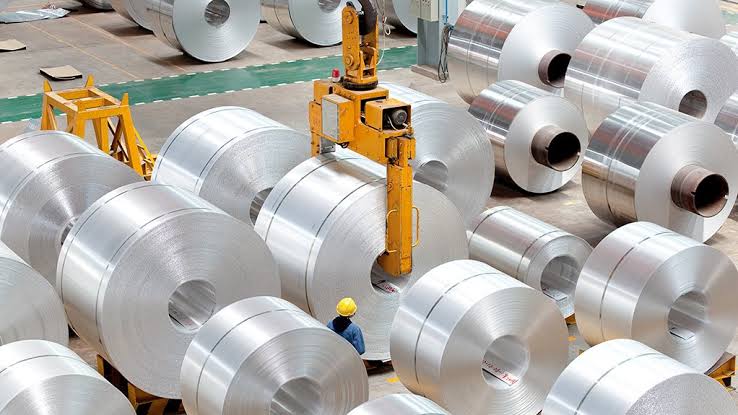Add your promotional text...
The Rise of Aluminium Prices: Exploring Demand Factors and Supply Issues
Synopsis: Aluminium prices increased by 0.86% to $239.65 per ton, driven by Chinese government stimulus measures that have bolstered market demand. While the demand outlook remains strong, concerns about supply constraints due to hydropower shortages in key production regions, particularly Yunnan province, could tighten the global aluminium market further. This blog delves into the impact of China's economic policies on aluminium demand, current market indicators, production trends, and the overall technical outlook for aluminium prices in the coming months.
COMMODITIES
By Ekta Mani
10/3/20243 min read


Aluminium prices saw a notable increase of 0.86% yesterday, closing at $239.65 per ton. This upward trend is largely attributed to a series of stimulus measures implemented by the Chinese government, which have significantly boosted market demand. Among these measures are liquidity injections, cuts to mortgage rates, and the easing of restrictions on home purchases, all of which are designed to stimulate economic activity and enhance demand within China.
Stimulus Measures Driving Demand
The impact of China’s economic policies cannot be overstated. By injecting liquidity into the market, the Chinese authorities have provided a robust cushion for aluminium prices, enabling manufacturers to operate more efficiently. The reduction in mortgage rates also plays a critical role, making housing more affordable for consumers and thereby increasing the demand for construction materials, including aluminium. As a result, the demand for aluminium in China continues to strengthen, which is vital for the global aluminium market.
Supply Concerns Loom
While demand within China is on the rise, there are growing concerns about aluminium supply. Smelters, particularly those located in the southwestern Yunnan province, are facing significant challenges due to hydropower shortages. These shortages are affecting production capabilities and could exacerbate supply constraints in the near future. As smelters struggle to maintain output levels, the global aluminium market is anticipated to tighten further, which may lead to increased prices.
Market Indicators
The London Metal Exchange (LME) has reported a narrowing discount between cash aluminium and the three-month contract, which has decreased to just $2.80 per ton. This marks the smallest gap since April, indicating that supply conditions may be tightening. Additionally, LME aluminium inventories have dropped to 792,950 tons, reaching their lowest levels since May.
In China, the situation mirrors that of the LME, with aluminium inventories falling to 658,000 tons—the lowest figure since February. However, it is worth noting that aluminium inventories on the Shanghai Futures Exchange (SHFE) have increased to 280,565 metric tons. This duality of inventory dynamics illustrates the complexities of the aluminium market, where regional variations in supply and demand can lead to divergent trends.
Production Levels and Trends
China’s aluminium production has been robust, with the country producing 3.73 million tons in August—marking the highest output level since 2002. Strong profits and rising prices have encouraged smelters to keep operations running at full capacity. Over the first eight months of 2024, China’s aluminium production totaled 28.91 million tons, reflecting a year-on-year increase of 5.1%.
On a global scale, primary aluminium output in July rose by 2.4% to 6.194 million metric tons. Notably, China’s production increased by 2.5%, while the rest of Asia saw a 3.3% rise. These figures indicate that while demand is growing, supply is also responding, albeit with potential constraints due to regional challenges.
Technical Analysis and Market Outlook
From a technical perspective, the aluminium market is witnessing a surge in fresh buying activity. Open interest has risen by 6.15%, reaching 3,419 contracts, signaling increased trader participation. Prices have also climbed by $2.05, indicating a bullish sentiment in the market.
Key support for aluminium prices is currently positioned at $237.8 per ton. Should prices fall below this level, the market could test the next support level at $235.8. Conversely, resistance is observed at $241.3, and if prices can surpass this threshold, they may advance toward $242.8.
The overall market outlook remains positive, driven by tightening supplies coupled with sustained demand from China. As smelters face operational challenges, market participants will be keenly observing how these dynamics unfold in the coming months.
In summary, the aluminium market is currently experiencing a bullish phase, supported by a combination of strong demand from China and tightening supply conditions. While stimulus measures have effectively boosted market sentiment, concerns over hydropower shortages and regional supply constraints warrant attention. As production levels continue to rise, traders and investors should remain vigilant in monitoring market indicators and technical signals to navigate this evolving landscape effectively. With the potential for increased prices and a robust demand outlook, the aluminium sector is poised for continued growth in the near future.
